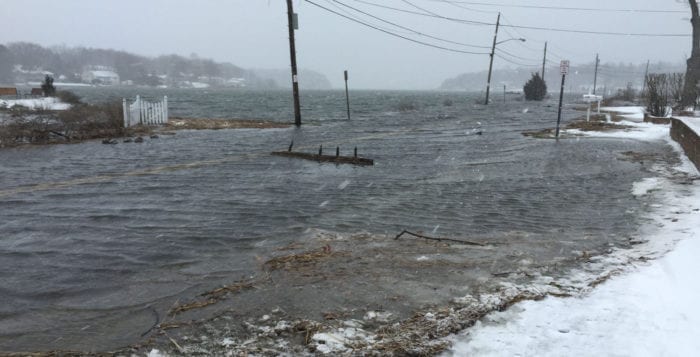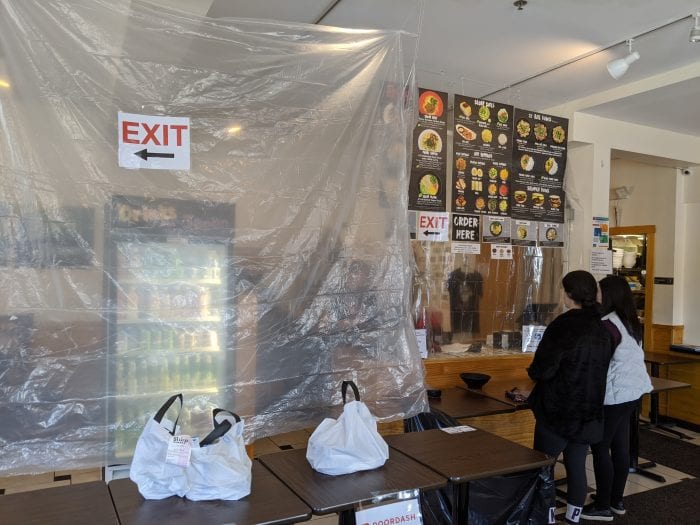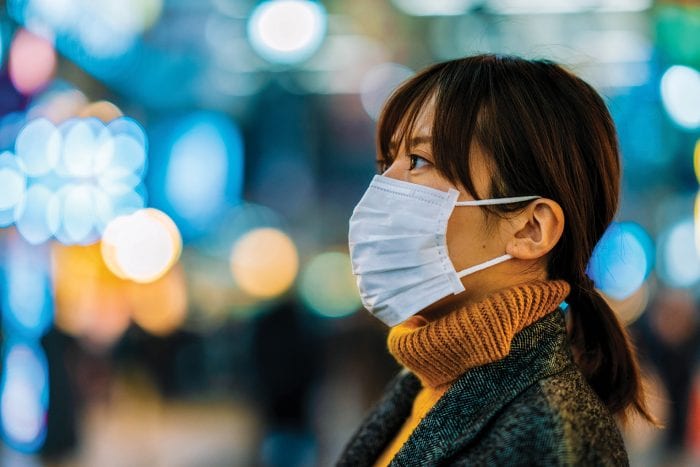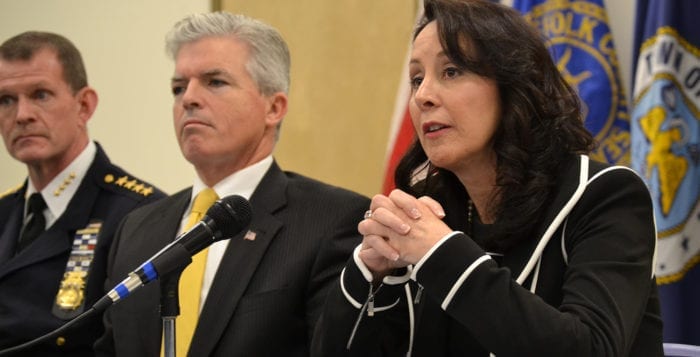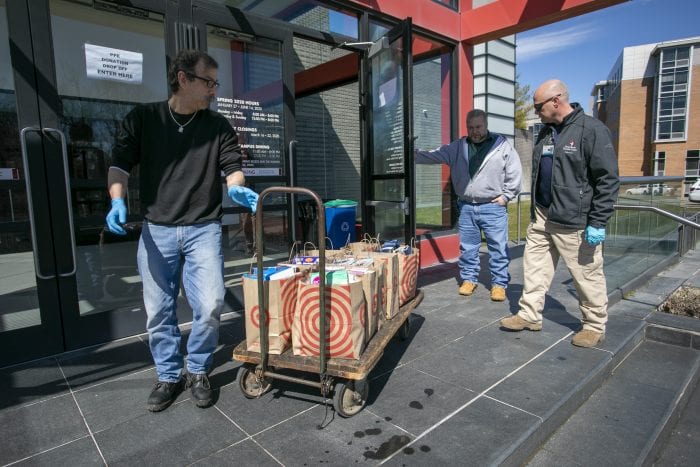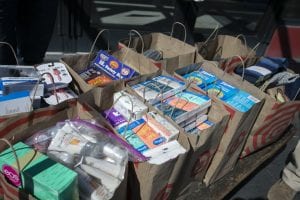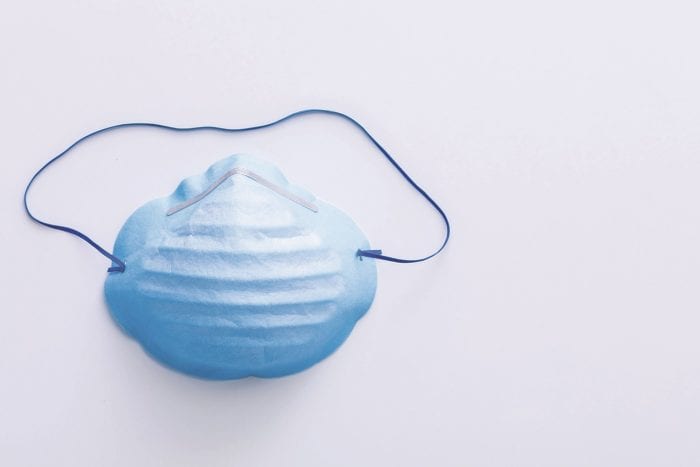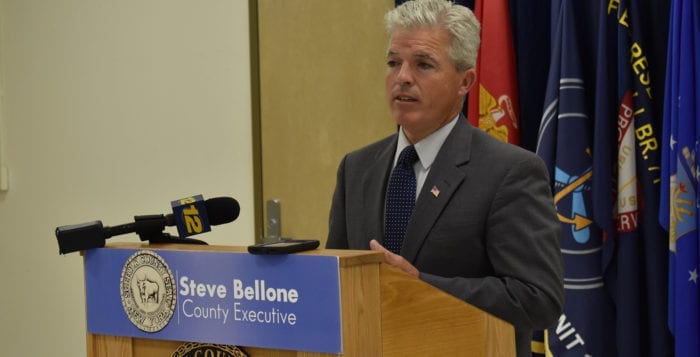By Sapphire Perera
I haven’t been to school in 13 days and I don’t know when I’m going back. Many of the shelves in the grocery stores are empty, toilet paper is sold out and everyone is self-quarantining. This panic and fear are due to the outbreak of the most current pandemic — the coronavirus, also known as COVID-19. This new strain of coronavirus originated in China and has spread globally. While it seems improbable that there’s a connection between pandemics and climate change, past pandemics prove otherwise. This connection shows us that for every action, there is a reaction.
Interview with Dr. Lisa M. Chirch
Dr. Lisa M. Chirch is a associate professor of medecine at the University of Connecticut who specializes in infectionous diseases.
SP: Sapphire Perera; LC: Lisa Chirch
SP: Due to habitat loss, there is evidence of vector transference between wild animals and livestock. Do you think this will eventually involve household pets, which may be more susceptible to loss of native immunity?
LC: Good question, and very important to those of us with household pets we adore as part of the family. To date, it is unclear whether viral infections such as COVID-19 can infect dogs and cats, or whether they would become ill if infected. It really depends on the specific organism and how they infect, which tissues are targets, which receptors are used for cell entry, etc. Certainly, the potential for domestic animals to be affected is present, and we should probably be taking similar precautions with our beloved pets as with our family members whom we want to protect.
SP: Extreme changes in global weather patterns are one factor of climate change. With increases in climate change and warmer weather, do you feel that future pandemics will originate in places such as North America and Western Europe instead of Asia and Africa, as they did with the 1918 Spanish flu?
LC: Throughout history, pandemics have originated from sites all over the world. Pandemics originate when humans are exposed to “novel” organisms we have never seen before, exposing populations without immunity. Over time these have frequently been related to the animal/human interface in some way, with organisms “jumping” from one species to another, and in the worst-case scenario, becoming efficient at human-to-human transmission. So, to the extent that climate change drives animals and humans further together, it drives the possibility of further epidemics. Importantly, climate change has more immediate and tangible effects on infectious diseases in humans that have been recently notable, such as the appearance of certain mosquito-borne arboviruses in the southern U.S. (dengue, chikungunya, Zika), and tick-borne illnesses migrating northward as well, with the associated northward movement of the tick species that carry them.

Climate change has made our winters shorter and the weather unseasonably warm. This global increase in temperature is just one of the causes of climate change, and directly affects vectors i.e., disease-carrying organisms such as mosquitoes, ticks, fleas and flies. These vectors spread diseases such as malaria, dengue fever, West Nile virus, and yellow fever which are some of the worst pandemics. The global increase in temperature is driving these vectors further from the equator and into the northern hemisphere. For instance, the United States has seen increased cases of dengue and malaria in Florida, California and Texas. Europe and the U.S. may soon be subjected to the same epidemics that plague people in equatorial climates. In contrast, other regions that usually struggle through the worst of the pandemics and epidemics will see a decrease in the number of outbreaks.
The increase in temperature, rainfall and humidity also creates more breeding grounds for vectors, leading to the easier spread of diseases. This was exemplified by India’s monsoon season from 1994 to 1996. The excessive monsoon rainfall and high humidity in the Punjab region of India led to an increase in malaria epidemics in places such as Rajasthan, Manipur, Nagaland and Haryana. Recent studies have shown that El Niño has actually increased the malaria epidemic risk in India by about fivefold. El Niño scientists have discovered increases in incidences of cholera, Zika, chikungunya, and hantavirus with El Niño occurrences.
Deforestation is another cause of climate change that brings vectors closer to urban communities. Sonia Shah, the author of the book “Pandemic,” says in her article in The Nation, “When deforestation threatens the survival of wild species, there are more opportunities for animal microbes to adapt to human bodies.” One example from the many pandemics that we’ve had in the past is the Ebola outbreak. In places such as Central and West Africa, there have been serious deforestation and habitat losses for bats, which are vectors for Ebola. These bats started inhabiting places closer to urban populations which, in turn, increased the likelihood of Ebola outbreaks. Studies in 12 countries have actually shown that it is twice as common to have vector mosquitoes in deforested areas than in intact forests.
Apart from bringing vectors close to human communities, climate change is introducing prehistoric diseases to mankind. In 2016, the Russian city of Yakutsk saw the outbreak of anthrax during a heat wave in Siberia. The thawing permafrost soil there released long-dormant bacteria and viruses that had been trapped in the ice for centuries. One 12-year-old boy died and at least 20 people were hospitalized from infection. Scientists speculate that more diseases lie beneath the ice and with the rising global temperature, we may see the reemergence of diseases such as smallpox, the bubonic plague and the 1918 Spanish flu.
Since January, there has been a significant universal decrease in social and economic activity. The results from this are astounding. First of all, since there has been slower economic activity, there has been a drop in carbon dioxide emissions. In Hubei province in Central China, there has been a drop in air pollution as the cloud of nitrogen dioxide evaporated in February. Italy saw similar results in its environment pertaining to nitrogen dioxide levels. Additionally, the once-murky canal water in Venice is now so clear that you can see the fish below. In countries all over the world, we are seeing changes like this. Unfortunately, it’s taking a pandemic brought about by climate change to reduce climate change.
Sapphire Perera is a junior at Port Jefferson high school. The “Turtle Island,” as the name for this ongoing column refers to the Native American mythology about North America existing on the back of a great turtle that bears every living being on its spine.

